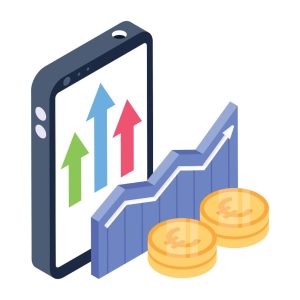From Clicks to Conversions: Optimizing Your Website for Maximum ROI
Are you ready to take your potential
From Clicks to Conversions: Understanding User Behavior and Website Optimization
When it comes to optimizing your website, understanding user behavior is crucial. You can think of your website as a digital storefront, and your visitors as window shoppers. How do they navigate through your website? What catches their attention? By analyzing user behavior, you can uncover valuable insights that will help you fine-tune your website for better results.
One key metric to keep an eye on is the click-through rate (CTR). It tells you how many people click on your website when it appears in search results or ads. A high CTR indicates that your website's title and description are compelling, attracting visitors to click through. On the other hand, a low CTR might mean it's time to optimize your titles and descriptions to entice more clicks.
Another crucial metric is the bounce rate. Imagine someone stepping into your physical store and leaving within seconds. That's what a high bounce rate signifies on your website – visitors arrive but quickly decide to leave. By analyzing the pages with high bounce rates, you can identify issues like slow loading times, poor design, or irrelevant content, and address them to keep visitors engaged.
To truly understand user behavior, consider conducting user research and usability testing. This involves observing how users interact with your website, gathering feedback, and identifying pain points. By stepping into the shoes of your visitors, you'll gain valuable insights into their preferences, allowing you to optimize your website to meet their needs.
Remember, user experience (UX) is a vital aspect of website optimization. Just like a well-designed store layout guides customers through aisles, a user-friendly website guides visitors toward conversion. Ensure your website is intuitive, easy to navigate, and visually appealing. Optimize loading times, simplify forms, and make sure your visitors enjoy a seamless experience from the moment they arrive.
Strategies for Optimizing Website Conversion Rates

Welcome back, business owners and marketing managers! In this section, we'll explore powerful strategies that will help you boost your website's conversion rates. Remember, conversion rate optimization (CRO) is the secret sauce that turns clicks into valuable actions. So, let's dive right in!
First things first, it's essential to set clear conversion goals. What action do you want your visitors to take on your website? Is it making a purchase, subscribing to a newsletter, or filling out a contact form? Define your conversion goals and track them using analytics tools. By monitoring your conversions, you can identify areas for improvement and measure the effectiveness of your optimization efforts.
Now, let's talk about creating compelling calls-to-action (CTAs). These are the signposts that guide your visitors towards conversion. Make your CTAs stand out by using contrasting colors, bold fonts, and persuasive language. Instead of generic phrases like "Click Here," consider using action-oriented statements that convey value, such as "Start Your Free Trial Today" or "Get Your Exclusive Discount Now." A well-crafted CTA can make all the difference in encouraging visitors to take the desired action.
Another crucial aspect of conversion rate optimization is optimizing your landing pages. Your landing page is the first impression visitors get when they arrive on your website, so it needs to be captivating and persuasive. Keep it clean, concise, and focused on the benefits your visitors will receive by taking the desired action. Use attention-grabbing headlines, compelling visuals, and concise copy that communicates your value proposition. Remember, less is often more when it comes to landing pages.
Reducing friction in the conversion process is paramount. Think of friction as those unnecessary obstacles that deter visitors from completing the desired action. Simplify your forms and only ask for essential information. Minimize the number of steps required to complete a transaction or sign up for a service. The smoother the process, the higher the chances of conversion.
Responsive web design is no longer a luxury; it's a necessity. With the increasing use of mobile devices, optimizing your website for mobile is crucial for maximizing conversions. Ensure your website is mobile-friendly, with fast load times and easy navigation on smaller screens. A positive mobile experience will not only boost conversions but also enhance your website's overall user experience.
A/B testing is a powerful technique that allows you to compare different versions of your website or landing page to determine which performs better. Test different headlines, images, layouts, and CTAs to identify the winning combination. Data-driven decision-making is key to effective optimization. By continually testing and iterating, you can refine your website to perfection.
Great job! You're one step closer to unlocking the full potential of your website.
Leveraging Digital Marketing Channels for Increased Conversions
Congratulations on making it to the final section, business owners and marketing managers! Now, let's explore how you can leverage various digital marketing channels to drive more traffic to your website and increase conversions. Get ready to unleash the power of digital marketing!
First and foremost, search engine optimization (SEO) plays a vital role in maximizing your website's visibility in search engine results pages (SERPs). Conduct keyword research to identify the terms and phrases your target audience is searching for. Optimize your website's content by strategically incorporating these keywords into your headings, meta tags, and body text. Create high-quality, relevant, and engaging content that not only appeals to search engines but also resonates with your visitors. By climbing the ranks in search results, you'll attract organic traffic that is more likely to convert.
Paid advertising, particularly pay-per-click (PPC) campaigns, can be a game-changer when it comes to driving targeted traffic to your website. Platforms like Google Ads and social media advertising allow you to reach your ideal audience based on demographics, interests, and search intent. Craft compelling ad copy, use eye-catching visuals, and direct users to dedicated landing pages that align with their search intent. With proper targeting and optimization, PPC campaigns can generate high-converting traffic and provide an excellent return on investment.
Content marketing is another powerful tool in your arsenal. By creating valuable, informative, and engaging content, you can establish yourself as an authority in your industry and build trust with your audience. Write blog posts, produce videos, or create infographics that address your target audience's pain points and provide solutions. Share your content on social media platforms, email newsletters, and industry forums to expand your reach and drive qualified traffic to your website. Remember, content that educates, entertains, or inspires has a higher chance of converting visitors into customers.
Social media engagement goes hand in hand with content marketing. Platforms like Facebook, Instagram, Twitter, and LinkedIn offer incredible opportunities to connect with your target audience and build brand awareness. Share engaging posts, run contests, host live events, and respond to comments and messages promptly. Social media is not just about broadcasting your message; it's about building relationships and fostering a community of loyal followers who will ultimately become brand advocates and loyal customers.
Personalized marketing approaches can work wonders when it comes to nurturing leads and increasing conversion rates. Email marketing allows you to deliver targeted messages directly to your subscribers' inboxes. Segment your email list based on demographics, interests, or previous interactions, and craft personalized messages that resonate with each group. Additionally, remarketing campaigns allow you to reach out to users who have previously visited your website but didn't convert. By displaying targeted ads across various websites and platforms, you can bring those lost visitors back and give them a second chance to convert.
As we conclude this article, remember that optimizing your website for maximum ROI is an ongoing process. Stay updated on the latest trends, monitor your analytics, and continuously test and refine your strategies. By understanding user behavior, implementing effective conversion rate optimization tactics, and leveraging digital marketing channels, you can turn your website into a powerful conversion machine.
Now, it's time for you to take action. Implement these strategies, adapt them to your unique business, and watch as your website transforms into a highly effective tool for driving conversions and achieving your business goals. Get ready to witness the remarkable results of your optimized website and maximize your return on investment!
Unlock the Secret of Marketing Effectively
